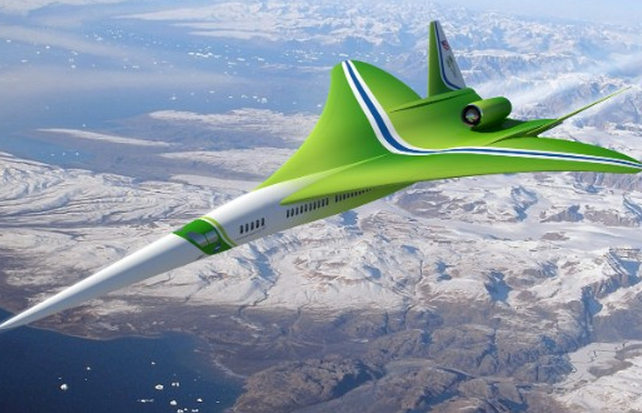Imagine flying from one end of the US to other in less than 3 hours. Well, thanks to supersonic jets, that might one day be a possibility.
Aerospace engineers at Lockheed Martin have designed a commercial supersonic jet called N+2, and it can fly with up to 80 people from New York to Los Angeles in 2.5 hours. It features a new kind of propulsion system. More specifically, it has a tri-jet configuration, with one engine on top of the actual plane and the remaining two under each wing, in order to achieve supersonic transportation.
According to Michael Buonanano, the N+2 program manager at NASA, aerospace engineers are also looking new techniques for low noise jet exhaust, integrated fan noise suppression, airframe noise suppression, computer customized airport noise abatement, and more. But the N+2 isn't the only passenger plane currently in development to feature such innovations and speed.
A Nevada-based company called Aerion is working on an AS2 business jet that can hit Mach 1.6 and travel at 1,217 mph. It is expected to debut by 2019, with the ability to carry about 12 passengers. The whole thing should cost around $110 million to develop, but it'll go twice as fast as the $65 million Gulfstream G650. That means it'll cut the flight from New York to London down to just four hours.
And finally, Boston-based Spike Aerospace is working on a similar business jet that can also hit a speed of Mach 1.6. All of these supersonic jets face one major hurdle however: sonic boom, the noise a plane makes when it goes supersonic. For this reason, supersonic jets are mostly limited to traveling over water and are banned in much of the US and other countries.
But these aerospace companies, as well as others like Boeing, are working to lower sonic boom. NASA even said it might be able to achieve this around 2022. That's especially good news for Lockheed. It most recently tested an unmanned aircraft - the HTV-2 - that goes over 13,000 miles per hour, which would equal a 12-minute flight between NY and LA.
READ:The Great Glass Elevator might soon be real thanks to MagLev

